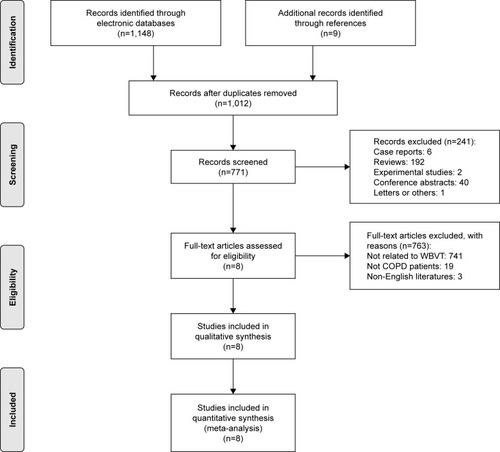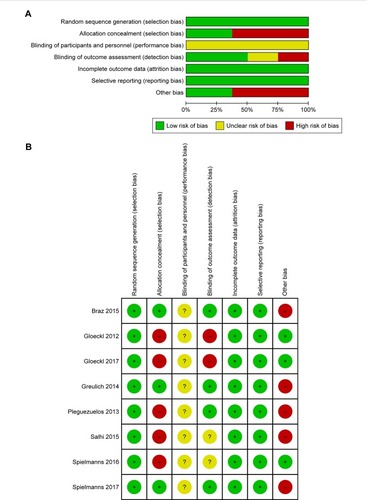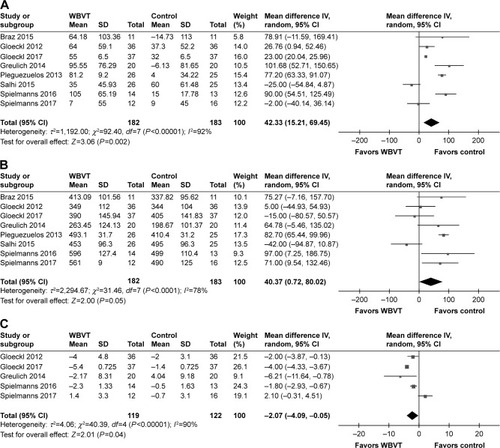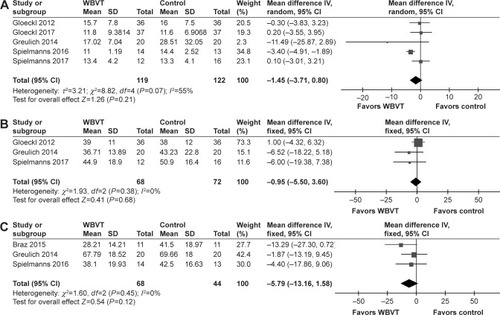Figures & data
Table 1 Characteristics of the included RCTs
Figure 1 The PRISMA flow diagram of literature retrieval.
Abbreviation: WBVT, whole-body vibration training.

Table 2 Risk of bias assessment
Figure 2 Assessment of risk of bias.

Figure 3 Meta-analysis of the effect of WBVT or control group on (A) change of 6-MWD; (B) 6-MWD; (C) change of SST.

Figure 4 Meta-analysis of the effect of WBVT or control on (A) SST; (B) FEV1 (% predicated); (C) SGRQ.

